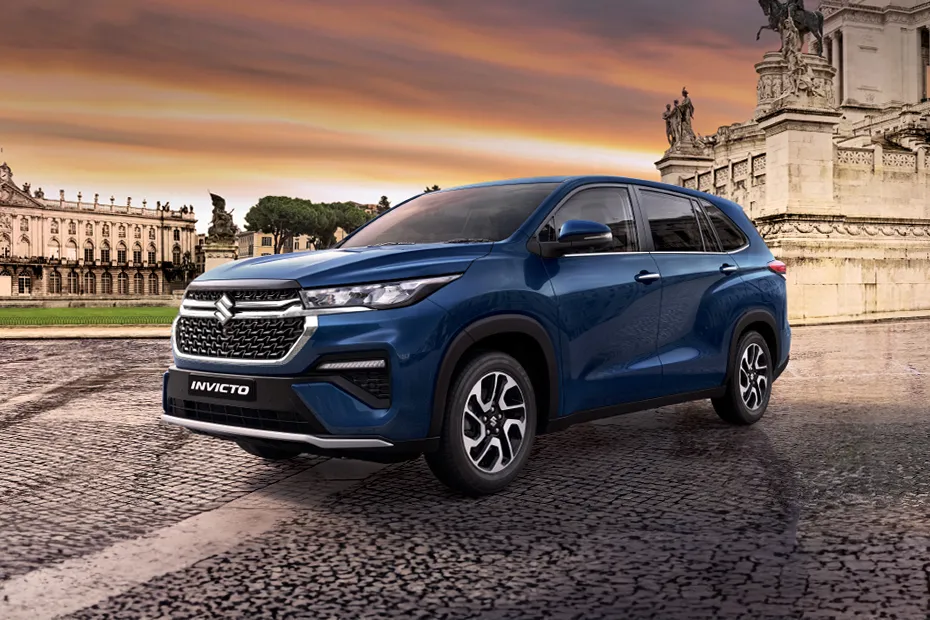Maruti Suzuki’s Invicto Hybrid, a notable entry in the hybrid vehicle market, showcases a technological synergy with Toyota’s Innova Hycross. Both vehicles stand out for their integration of advanced hybrid systems, combining gasoline and electric power. This shared technology highlights a collaborative effort in the automotive industry to enhance eco-friendly driving experiences. This article aims to provide a comprehensive analysis of the hybrid system that is at the heart of both vehicles. Understanding this shared technology offers insights into the future of eco-friendly automotive design and the commitment to sustainable innovation in the industry.
The Engine and Advanced Battery System of the Invicto and Innova Hycross Hybrid:
At the core of the hybrid system, shared by both the Invicto and Innova Hycross, is a 2.0-liter, 4-cylinder gasoline engine. This engine is engineered for reliable performance with a focus on fuel efficiency. It acts as a key component in the vehicle’s powertrain, playing a significant role in enhancing the overall operational efficiency of the hybrid system.
Complementing this engine is a 1.7 kWh Nickel-Metal Hydride (Ni-MH) battery. Selected for their durability and consistent power output, Ni-MH batteries are particularly suited for hybrid applications. They offer a higher energy density compared to traditional lead-acid batteries and are seen as more environmentally friendly than some older battery technologies.
The choice of a 1.7 kWh battery balances factors like weight, cost, and energy storage capability, ensuring effective electrical energy storage. This enhances the gasoline engine’s performance, especially in urban driving scenarios where hybrids typically show increased fuel efficiency.
These components form part of the 5th Generation Self-Charging Strong Hybrid Electric System, developed to efficiently manage the distribution of power between the gasoline engine, the electric motor, and the battery. The system’s goal is to optimize fuel consumption while ensuring consistent performance across various driving conditions.

Energy Management in the Hybrid System:
The hybrid’s energy management is orchestrated by its Power Control Unit (PCU), a sophisticated component that dynamically adjusts the vehicle’s power sources based on driving conditions. The PCU is designed to optimize energy efficiency and vehicle performance through the following modes:
- EV Mode: In scenarios like low-speed urban driving or when minimal load is placed on the vehicle, the PCU activates the EV Mode. Here, the vehicle operates exclusively on its electric motor, ensuring silent running and zero tailpipe emissions. This mode is particularly advantageous in city environments where reducing noise and emissions is essential.
- Hybrid Mode: This mode is a blend of the gasoline engine and electric motor. The PCU manages the interaction between these two, providing a combined output of 184 horsepower and 206 Nm of torque. The objective here is to balance fuel efficiency with performance, making it suitable for a wide range of driving scenarios, from city streets to rural roads. The PCU continuously adjusts the power split between the engine and motor to optimize efficiency and performance based on real-time driving conditions.
- Engine Mode: Primarily used during highway travel or long-distance cruising, this mode relies predominantly on the gasoline engine. The focus in Engine Mode is on achieving maximum fuel efficiency, particularly at higher speeds where the gasoline engine operates more effectively. This mode helps in extending the vehicle’s range and reducing the frequency of refueling stops.
Regenerative Braking System:
An integral part of the hybrid’s energy management is its regenerative braking system. This system captures kinetic energy normally lost during braking and coasting phases and converts it into electrical energy. The regenerated electricity is then used to recharge the Ni-MH battery. This process not only supplements the electric motor’s power supply but also enhances the overall fuel efficiency of the vehicle. The regenerative braking system plays a significant role in reducing the vehicle’s reliance on the gasoline engine, thereby contributing to its environmental performance by lowering overall fuel consumption and emissions.
e-Drive Transmission:
The hybrid vehicles are equipped with an e-Drive transmission, a sophisticated, electronically controlled system designed for smooth and efficient gear shifting. Unlike traditional mechanical transmissions, the e-Drive system utilizes electronic signals for gear changes, allowing for more rapid and smoother shifts. This system is adept at adjusting gear ratios in real-time to suit varying driving conditions, thereby enhancing performance and efficiency. Integral to the hybrid system, the e-Drive transmission seamlessly manages power distribution between the gasoline engine and electric motor, ensuring smooth transitions across different power modes. This harmonious integration is key to maintaining consistent and unobtrusive performance, particularly important when the vehicle switches between EV, Hybrid, and Engine modes.
In addition to its technical prowess, the e-Drive transmission also enhances the driving experience. It offers a manual-like control option, often through paddle shifters or a special shift mode, catering to drivers who prefer a more engaged driving experience. This feature allows for manual selection of gears, offering greater control over the vehicle’s performance. Moreover, the transmission is tuned to balance fuel efficiency with driving pleasure, especially effective in urban environments with frequent stop-and-go traffic. The smooth gear transitions also contribute to a comfortable ride, minimizing the jerky movements often associated with conventional automatic transmissions.

